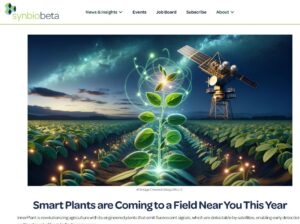
(From Synbiobeta – click here for original coverage)
Despite your painstaking efforts to pick perfect produce, you didn’t notice the tiny bit of mold growing on that one strawberry on your weekend grocery stock-up. By Friday, you’ve got a full-on fuzz fest on your hands.
Fungus spreads fast, even in your fridge. And your mushy strawberries were the lucky ones. Plenty of their neighbors died in the field, never to produce a fruit.
The Costly Impact of Fungal Diseases in Agriculture
Fungi are responsible for about 80% of plant diseases, resulting in $100-200 Billion in losses annually in the United States alone. What’s worse, some fungi produce toxins that are harmful to humans and livestock.
So, what’s a farmer to do? Fortunately, we have fungicides. Fields are treated with fungicides—yes, organic ones, too—when a fungal outbreak appears.
But spraying a field with fungicide once we see fungus is like giving an entire elementary school antibiotics because a few kindergarteners have pink eye. We know from experience that every one of those booger eaters is likely to end up with pink eye, but broad-scale antibiotics hardly seem like a good solution. What if we could know when a kid gets pink eye before he has any symptoms and treat him before he’s ever contagious?
A New Approach to Combat Fungal Infections
That is what InnerPlant does for farmers. “We make crops that can communicate,” said Shely Aronov, CEO and Co-Founder of InnerPlant. And they’re coming to a field near you next year.
(Article continues at Synbiobeta)